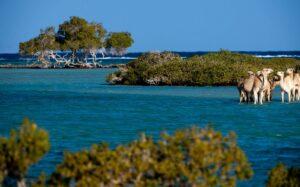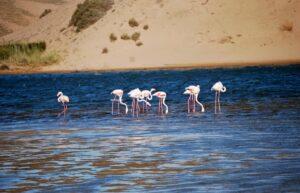Mole National Park is located in the northern region of Ghana and is the country’s largest and most diverse wildlife sanctuary. Spanning over 4,840 square kilometers, the park is a haven for a wide variety of animals, including elephants, antelopes, warthogs, and numerous bird species.
Established in 1958 and officially designated as a national park in 1971, Mole offers visitors a unique opportunity to experience Ghana’s rich biodiversity and explore its savannah landscapes.
The park is also known for its guided walking safaris, where visitors can get up close and personal with the wildlife, a rare and thrilling experience in West Africa. This guide will take you through the wonders of Mole National Park, from its diverse wildlife to the best times to visit and everything you need to know for an unforgettable safari adventure.
Please Download Our App from the Android or Apple Store.
Overview of Mole National Park
Mole National Park is situated in the Savannah Region of Ghana, near the town of Larabanga, and is about 146 kilometers west of Tamale, the regional capital. The park’s landscape is characterized by its rolling savannah grasslands, scattered woodlands, and numerous rivers and waterholes, which serve as vital sources of water for the park’s wildlife, especially during the dry season. Mole is also home to several ancient baobab trees, which add to the park’s unique and picturesque scenery.
The park’s diverse ecosystems support a wide range of flora and fauna, making it a crucial conservation area in Ghana. Mole National Park is managed by the Ghana Wildlife Division, which oversees conservation efforts, research, and the promotion of eco-tourism in the region. The park is also an important cultural site, with the nearby Larabanga Mosque, one of the oldest mosques in West Africa, attracting visitors who are interested in both natural and cultural heritage.
Visitors to Mole National Park can choose from a variety of activities, including game drives, walking safaris, birdwatching, and cultural tours. The park’s location, far from the hustle and bustle of Ghana’s urban centers, provides a tranquil environment where visitors can immerse themselves in nature and enjoy the beauty and serenity of the African wilderness.
Wildlife in Mole National Park
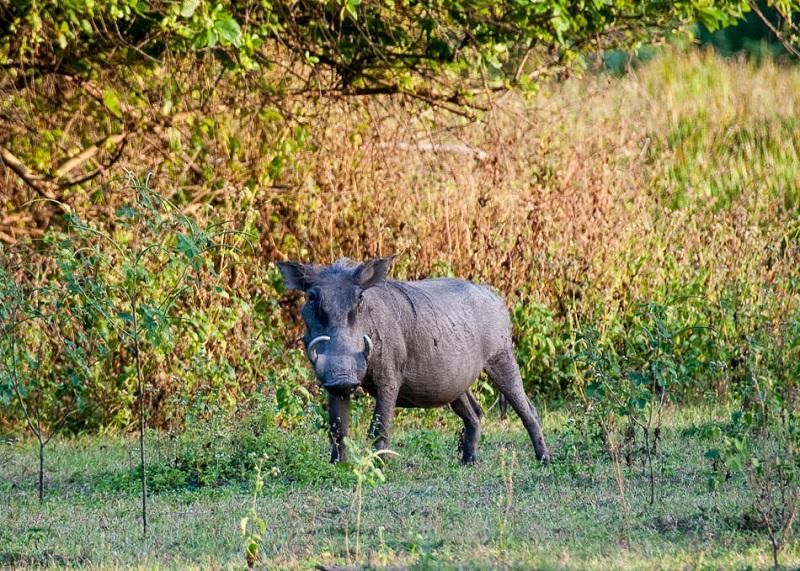
Mole National Park is renowned for its rich wildlife, offering some of the best game-viewing opportunities in West Africa. The park is home to around 93 species of mammals, 33 species of reptiles, and over 300 species of birds, making it a paradise for wildlife enthusiasts.One of the main attractions of Mole National Park is its population of African elephants, the largest in Ghana.
Visitors are often treated to close encounters with these majestic creatures, particularly around the park’s waterholes, where elephants can be seen bathing, drinking, and socializing. The park is also home to several species of antelope, including the roan antelope, bushbuck, and waterbuck, as well as the more elusive kob and oribi. Predators in the park include lions, leopards, and hyenas, although these are less commonly seen by visitors.
The park’s open savannah and dense woodlands provide ideal habitats for these carnivores, and sightings are often a matter of luck and timing. Warthogs are a common sight in the park, often seen foraging in the grasslands or near the park’s visitor center, where they have become accustomed to human presence.
Mole National Park is also a birdwatcher’s dream, with an impressive array of bird species that include both resident and migratory birds. Some of the notable species include the Abyssinian ground hornbill, the white-backed vulture, and the martial eagle. The park’s varied habitats, from open savannah to wetlands, support this diverse avian population, making it an excellent destination for birdwatching.
The Best Time to Visit Mole National Park
Mole National Park is a year-round destination, but the best time to visit for wildlife viewing is during the dry season, which runs from December to April. During these months, the vegetation is less dense, and animals tend to congregate around water sources, making it easier to spot them. The dry season also offers more comfortable weather conditions for walking safaris and game drives, with lower humidity and cooler temperatures in the mornings and evenings.
The wet season, from May to November, brings lush green landscapes and an abundance of water, but it can make wildlife viewing more challenging as animals disperse throughout the park. However, the wet season is an excellent time for birdwatching, as migratory birds arrive and the park’s resident bird species are more active. The park is also less crowded during this time, providing a more peaceful and solitary experience for those who don’t mind the occasional rain shower.
Getting to Mole National Park from Tamale
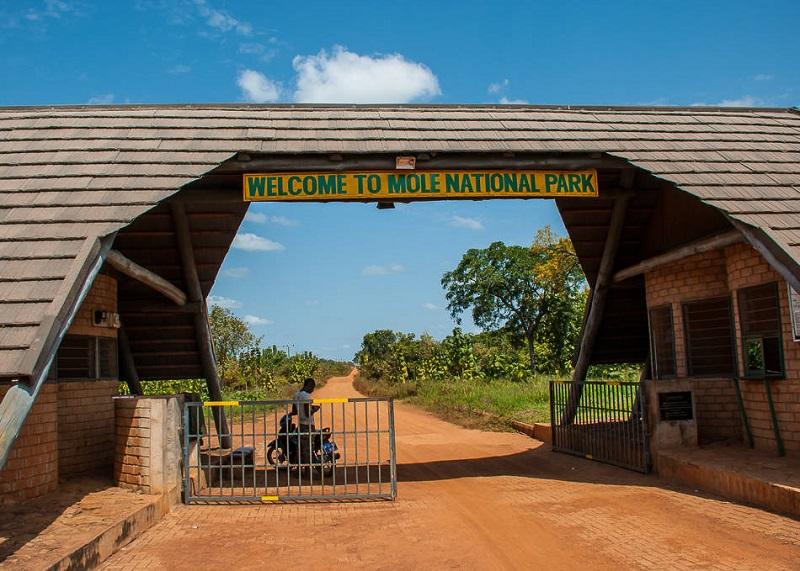
Mole National Park is located roughly 146 kilometers from Tamale, the capital of Ghana’s Northern Region. The journey from Tamale to the park takes about 3 to 4 hours by road, depending on traffic and road conditions. The route is relatively straightforward, with the main road from Tamale to Damongo being mostly paved and in good condition.
From Damongo, the road to Mole National Park is unpaved but passable by most vehicles. Visitors can reach Mole National Park by private car, taxi, or public transport. For those using public transport, there are regular buses and minibusses (trotros) that run from Tamale to Larabanga, the nearest town to the park. From Larabanga, visitors can take a taxi or arrange for a park vehicle to transport them to the park entrance.
For those flying into the region, Tamale has a domestic airport with regular flights from Accra and other major cities in Ghana. From Tamale, transfers to Mole National Park can be arranged through local tour operators or by hiring a private vehicle.
Other Activities in Mole National Park
In addition to game drives and walking safaris, Mole National Park offers a variety of other activities that allow visitors to explore and experience the park’s natural and cultural heritage. Birdwatching is a popular activity, with the park’s diverse habitats supporting a wide range of bird species. The early morning and late afternoon are the best times for birdwatching, as many species are more active during these cooler hours.
Cultural tours to nearby villages provide an opportunity to learn about the traditional way of life of the local communities. Visitors can explore the historic Larabanga Mosque, believed to be one of the oldest mosques in West Africa, and interact with the local people to gain insights into their customs, crafts, and daily activities.
For those interested in hiking, there are several trails in and around the park that offer scenic views of the landscape and opportunities to spot wildlife. The trails vary in length and difficulty, making them suitable for different fitness levels.
Park Fees for Mole National Park
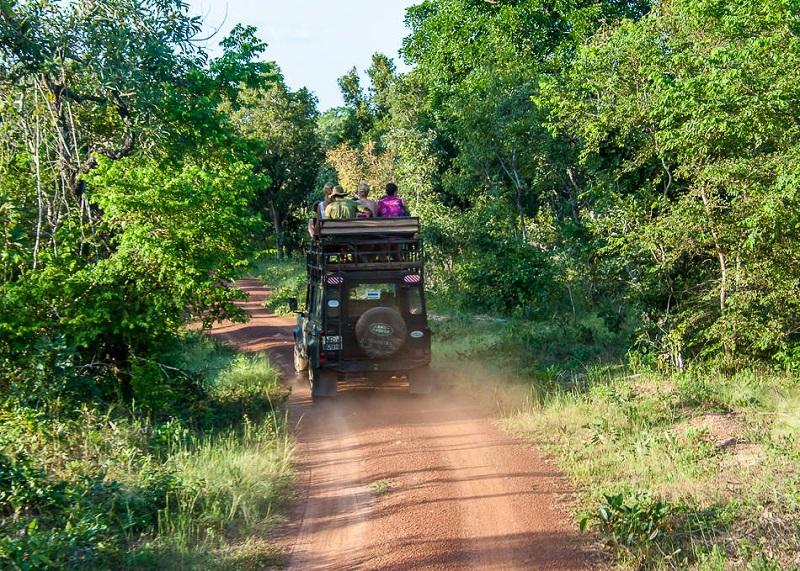
As of 2024, the entrance fees for Mole National Park are as follows:
- Non-Resident Adults: $10 per person per day
- Non-Resident Children (5-15 years): $5 per child per day
- Ghanaian Citizens and Residents Adults: GHS 20 per person per day
- Ghanaian Citizens and Residents Children (5-15 years): GHS 10 per child per day
In addition to the entrance fees, there are additional charges for guided activities such as game drives and walking safaris. The cost of these activities varies depending on the duration and the number of participants. It is recommended to book these activities in advance through the park’s visitor center or a local tour operator.
FAQs: Touring Mole National Park
Do I Need a Car to Tour the Park?
Yes, a car is necessary to tour Mole National Park, especially if you plan to cover different areas within the park. While walking safaris are popular, a vehicle is required for longer distances and for accessing more remote parts of the park.
Are Unguided Walks Allowed in the Park?
Unguided walks are not allowed in Mole National Park for safety reasons. All walking safaris must be conducted with a trained park guide, who is knowledgeable about the terrain, wildlife, and safety protocols.
How Much is a Game Drive in the Park?
The cost of a game drive in Mole National Park varies depending on the duration and the number of participants. As of 2024, a standard two-hour game drive costs approximately GHS 200 per vehicle, with additional fees for the guide.
Conclusion
Mole National Park is a must-visit destination for anyone traveling to Ghana, offering a unique blend of wildlife, natural beauty, and cultural experiences. Whether you’re exploring the savannah on a walking safari, witnessing the majesty of African elephants, or immersing yourself in the local culture, Mole promises an unforgettable adventure in the heart of West Africa.

